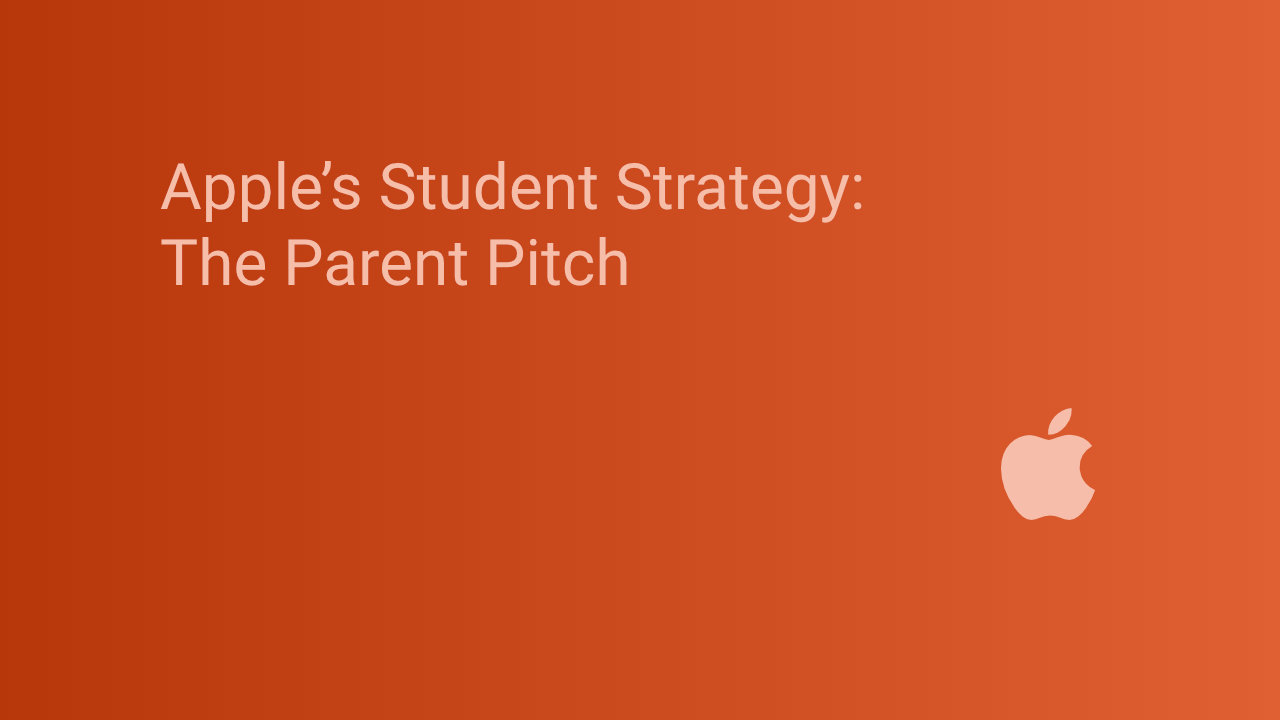Every summer, Apple rolls out its back-to-school campaign, dangling discounts, free AirPods, and the usual lifestyle imagery of stylish students typing away on campus lawns. But this year, something different stood out — a PowerPoint presentation. Specifically, “The Parent Presentation.”
This isn’t a glossy ad or a TikTok campaign. It’s a deck designed for students to use on their parents. The idea? If you want a Mac for university, here’s your ready-made pitch to convince the people footing the bill.
But beyond the cleverness of the concept, one small but telling detail caught our attention: Apple didn’t just offer it in Keynote or PowerPoint. They also released a fully editable version in Google Slides — hosted on Google Drive.
TL:DR – Let that sink in. Apple. Promoting a pitch deck. On Google's platform. Its smart and subtle.
Contents
Why it matters
It’s easy to dismiss this as a convenience. After all, plenty of people use Google Drive. But this decision quietly acknowledges something Apple rarely says out loud: the default digital hub for students isn’t iCloud. It’s Google Workspace.
Class documents live in Docs. Presentations are in Slides. Collaboration happens in real-time across Sheets and shared Drives. Even universities that hand out iPads often still run Google Classroom. If Apple wants to win in education, it has to coexist with a Google-native academic world.
This is less about cloud storage and more about cultural relevance. Apple is betting that students care less about platform loyalty and more about whether their tools just work together. If that means publishing on Google’s turf to push a premium MacBook, so be it.
The message behind the message
The Parent Presentation itself is a simple but potent artefact. It walks through all the reasons a Mac or iPad makes sense for university: performance, battery life, creative power, resale value, cross-device integration. It’s well-crafted, visually clean, and full of feel-good educational language.
But what it’s really doing is teaching students how to sell. It gives them a narrative: this isn’t just a shiny laptop — it’s a career enabler, a study partner, a long-term asset. In an era where student debt and cost-of-living pressures are real, that’s no small thing.
By empowering students to make their own case, Apple is quietly flipping the traditional model. It’s no longer the brand selling to parents — it’s the student doing it, armed with a pitch kit.
Product positioning: education as ecosystem
The campaign underscores Apple’s broader pitch: that its ecosystem isn’t just for creatives or developers anymore — it’s for everyone. The messaging is clear:
- Mac + iPad + iPhone = seamless continuity.
- Stage Manager, Universal Clipboard, AirDrop, Notes syncing, and Apple Intelligence features all drive home the idea of frictionless multitasking.
- Longevity and sustainability (thanks to regular updates and recycled materials) soften the upfront cost with long-term value.
Even the choice of examples — using AutoCAD for engineering, Adobe tools for creative arts, MATLAB for STEM, and Microsoft Excel for business — shows an effort to meet students across every discipline.
And then there’s the new AI layer. Apple Intelligence (limited to M-series chips for now) promises smarter summaries, cleaner emails, and more focused work sessions. It's subtle, not showy — but it further differentiates Apple from ChromeOS or budget PCs.
The contradiction: privacy vs platform
Apple loves to trumpet privacy. And yet, here it is — publishing a slide deck on Google Drive. Some might call it ironic. But in practice, it’s pragmatic.
Students use what’s easy. And right now, Google’s ecosystem is ubiquitous in education. If Apple insisted on keeping everything locked inside its walled garden, it would lose relevance among the very users it wants to win over. Embracing Google Slides doesn’t compromise Apple’s values; it acknowledges the real-world workflow of students in 2025.
It’s also a gentle nod to the hybrid nature of modern education. A student might use a Mac for coursework, an iPad for note-taking, and a Google Doc to collaborate on a group project. No single vendor owns the full experience. Apple seems to finally accept that — and instead focuses on making its slice of the experience the most appealing.
A smart, subtle move
The Parent Presentation is a minor campaign asset, but it reveals a lot about how Apple sees the student market. It knows that today’s learners are discerning, resourceful, and connected. They don’t just want tech — they want tools that earn their keep.
Offering a presentation to help students argue their case is savvy. Publishing it in multiple formats, including Google’s, is even savvier. It says: we’re confident enough in our products that we’ll meet you wherever you are — even if that means playing nicely with competitors.
In short, Apple isn’t just selling laptops anymore. It’s selling justification. And in a world where student budgets are under pressure, helping young people explain “why a Mac?” might be its sharpest strategy yet. Apple has, for decades, prooted use of its products in education, with generous discounts, knowing full well that todays students are tomorrows small business and enterprise end-users and wishing to get them hooked on Apples productivity tools early!

